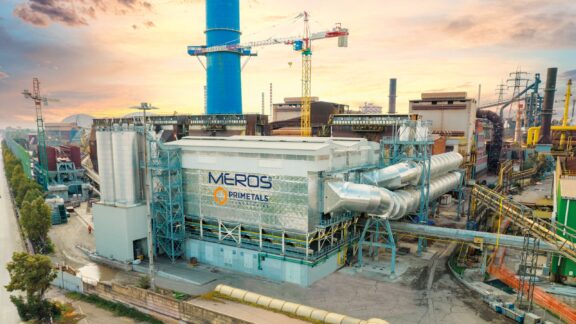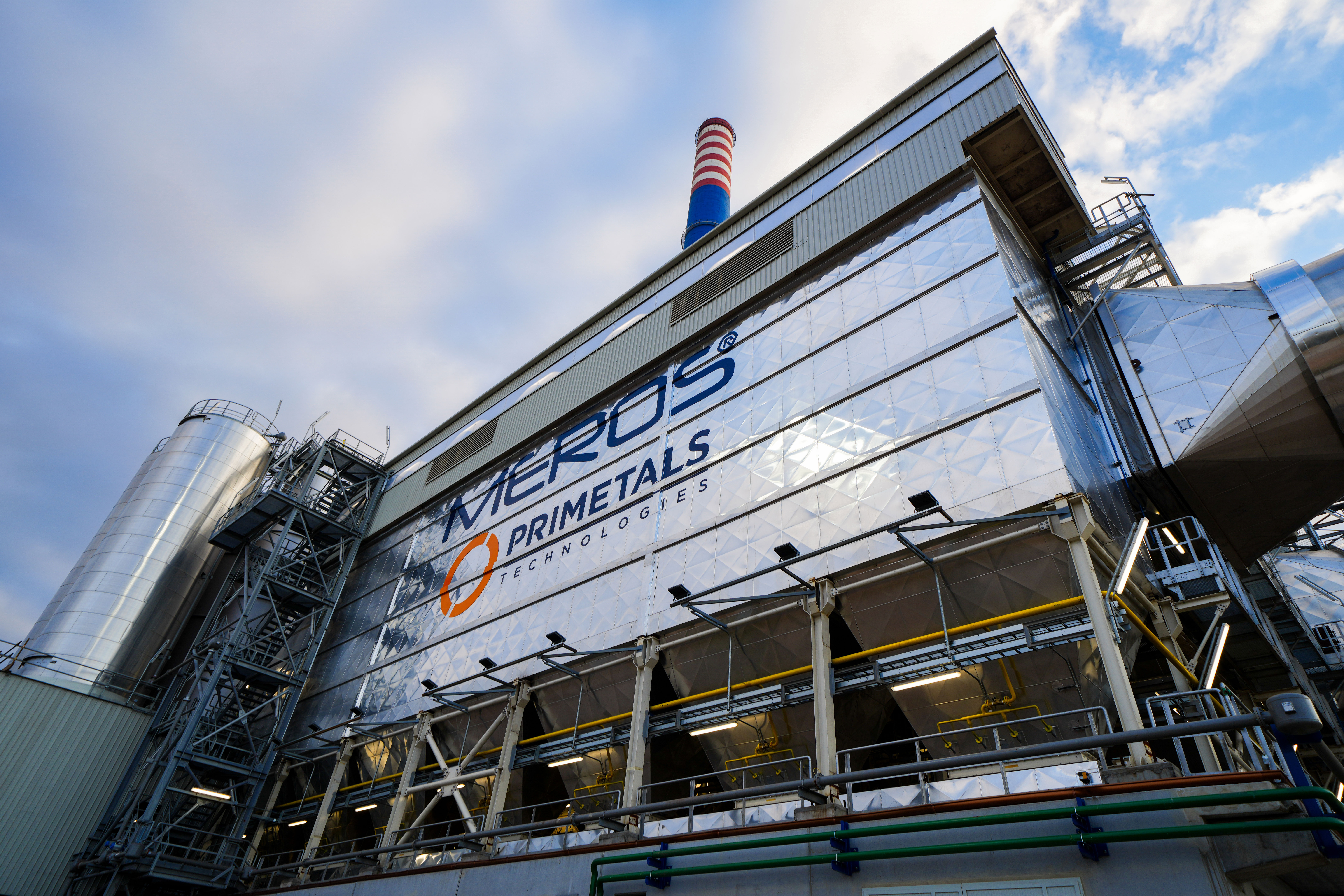With its high strength-to-weight ratio and relatively low production costs, steel’s recyclability makes it invaluable for the development of society toward sustainability. However, the steel industry currently carries a heavy burden, contributing around eight percent of global carbon emissions. With carbon-neutral targets set by 153 countries, the pressure is to move toward decarbonization and away from fossil fuels. The steel industry has transformative innovations to reach green steel production.
Green steel has arrived. A term that is becoming commonplace in the steel industry, “green steel” represents a focus on decarbonization and a transformation of the steel industry toward eco-friendly production routes (For more on green steel at Primetals Technologies, see “What is Green Steel?”). As the industry transforms, steel producers are adopting new technologies to change their production routes and move away from fossil fuels. Yet, no single solution can immediately solve the industry’s challenges, but the stepwise adoption of innovations will define the new era of green steel.
The Challenge of Carbon
Facing the reality of climate change, 153 countries worldwide have pledged their commitment to net-zero carbon emissions following the most recent U.N. Climate Change Conference, COP27, in Sharm el-Sheikh, Egypt. While COP26 in Glasgow, U.K., focused on a commitment to phasing out coal subsidies, reducing methane leakage, and halting and reversing deforestation, the steel industry’s immediate impact is reducing energy consumption and moving away from fossil fuels. COP27 achieved progress on a stepwise phase-out of coal and agreed on a global fund to compensate developing companies intensely impacted by climate change, with funding postponed until COP28.
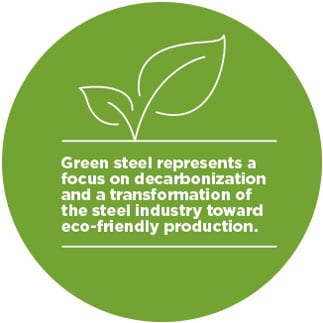
When discussing carbon emissions and their impact on the steel industry, one must look no further than legislation such as the European Green Deal from 2019/2020. The European Green Deal proposes financial mechanisms to help cut greenhouse gas emissions by 55 percent by 2030 compared to levels in 1990 and to reach neutrality by 2050. Similar agencies worldwide will play a decisive role for producers on the road to decarbonization. In 2022, amidst increasing energy prices, Europe also saw an increase in the cost per ton of CO2 emissions, reaching nearly 100 euros per the Emissions Trading System. With almost two tons of CO2 produced for every ton of crude steel, the price per ton of CO2 will play a significant role for steel producers as more countries adopt carbon-pricing schemes—especially with the introduction of the Carbon Border Adjustment Mechanism in Europe as the “free allocation” period is phased out.
While steel producers could reduce carbon emissions by cutting back on production, steel demand is set to rise—especially in India and Southeast Asia, as well as in the renewable energy sector and e-mobility. Experts at Primetals Technologies forecast steel demand to reach approximately 2,200 million tons by 2050, which reflects a compound annual growth rate of 0.5 percent. Therefore, the steel industry must find solutions to reduce carbon emissions and meet growing needs.
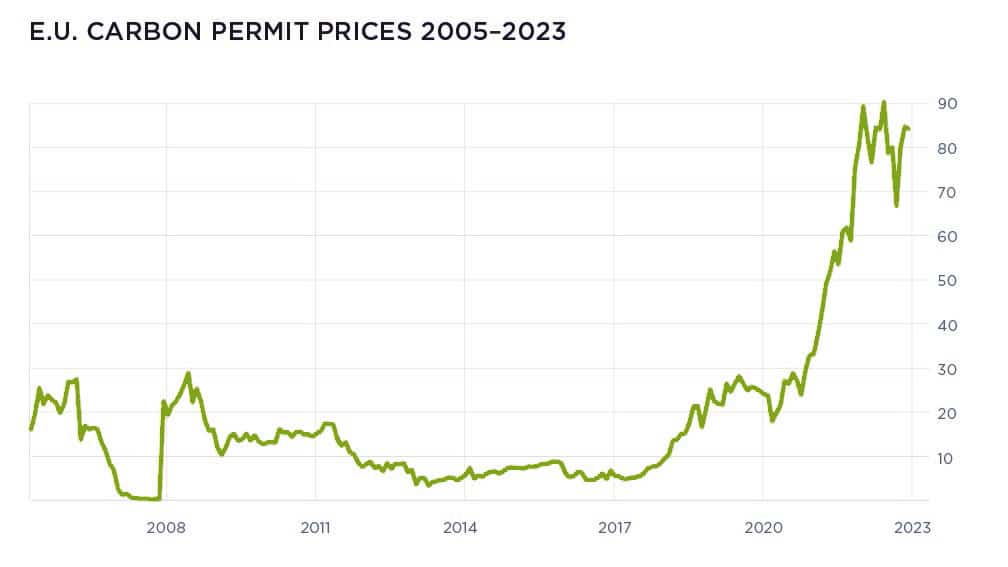
Groundbreaking Sustainable Solutions
While many of the steel industry’s challenges seem insurmountable, groundbreaking solutions pave the way toward carbon neutrality. These innovations lead to reduced carbon emissions and improved contributions to the circular economy, and will define a bright future for heavy industries. For the steel industry, the technologies involved include increased electrification, scrap-based production routes, and direct reduction using natural gas and hydrogen. Adjacent infrastructures will also see increased development to meet these needs—e.g., expanding the renewable energy infrastructure and developing a hydrogen and CO2 eco-system.
Direct reduction plants, electric arc furnaces (EAFs), and endless strip production—i.e., Arvedi ESP—help by immediately reducing carbon emissions, replacing traditional coal-based process steps that emit increased amounts of CO2, including coke batteries, agglomeration plants, blast furnaces (BF), basic oxygen furnaces (BOFs), and the fossil-fired reheating of slabs for downstream processing. Taking these processes one step further, hybrid mills that operate BFs/BOFs and EAFs will become a major trend for steel producers transitioning stepwise to electric steelmaking. Using a Smelter furnace will define “two-step” steelmaking as we advance. With a variety of immediate solutions and more in development, the shift toward carbon neutrality for the steel industry will occur step by step, and producers are already taking the opportunity to change current production routes for sustained returns.
Digitalization and the Supply Chain
Integrating these “green” technologies also requires a close eye on a delicate supply chain. One of the most valuable raw materials for steel producers looking to reduce carbon emissions is scrap. Scrap recycling is a highly efficient means of reducing the carbon footprint of steelmaking. However, current scrap supplies are limited and insufficient when producing high-grade steels due to contaminants like copper. To that end, SICON and Primetals Technologies have partnered to develop digital scrap-cleaning solutions to create “crafted scrap” (For more on “crafted scrap” at Primetals Technologies, see “Crafting Quality: Automated Scrap Solutions”). “Crafted scrap” would enable the production of more advanced steel grades based on a higher share of scrap in the charge mix, but even this will not be enough to keep pace with the rising demand for steel. To this end, scrap sorting will become more essential, thanks to the exploding steel-production capacity in the early 2000s, which will return steel to the circular economy with an average lifecycle of 40 years. This trend will support the installation of additional greenfield EAFs to process end-of-life steel and increased scrap use.
As the steel industry uncovers new pathways toward decarbonization, the reduction of iron ore plays a vital role. While hydrogen-based direct reduction shows immense potential, using a Smelter offers steel producers an alternative route for melting and final reduction. The Smelter focuses on melting low-grade DRI, creating an innovative two-step process for steelmaking. The combined first step reduces low-grade DRI and completes final reduction in the Smelter—e.g., a HYFOR and Smelter configuration—, producing green hot metal. After that, metallurgical work is performed in the BOF and secondary metallurgy. A Smelter operates under a reducing atmosphere, well suited for high slag volumes generated from the low-grade DRI. It will generate a slag similar to blast furnace slag, supporting the cement industry’s decarbonization efforts as a secondary feedstock. A rectangular Smelter furnace can melt an annual capacity of up to 1.5 million tons of DRI.
The Power of Direct Reduction
Direct reduced iron (DRI) will play a vital role in the future of steel production and provide the necessary basis to produce advanced steel grades and make up for the demand that scrap cannot supply. The MIDREX direct reduction process using natural gas can reduce carbon emissions by 65 percent when combined with renewable-powered EAFs, compared to the BF/BOF baseline route. Producing DRI or hot-briquetted iron (HBI) based on pelletized high-grade iron ore with natural gas is a transitional solution to reduce CO2 emissions quickly. However, this problem expands as the amount of low-grade iron ore available worldwide significantly outweighs that of high-grade iron ore.
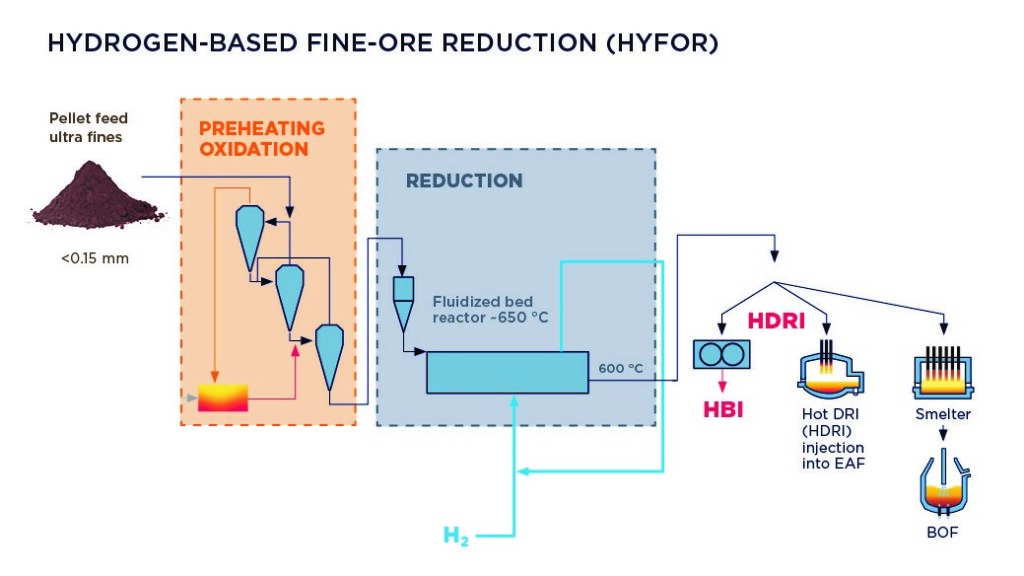
an essential technology defining the future of the steel industry.
Currently in development at Primetals Technologies is the HYFOR process, which focuses on hydrogen-based fine-ore reduction. After going into operation at the voestalpine site in Donawitz, Austria, HYFOR has shown promise to produce net-zero DRI and removes the need for the pelletizing process (see Figure 2). Additionally, through cooperation with POSCO in Korea, HyREX, adapting the FINEX process, utilizes cascading fluidized-bed reactors with sinter feed ores to produce DRI, and later hot metal, using hydrogen in the reduction process and a smelter.

Electrification of Production
Increasing demand for steel in the coming decades necessitates expanding clean, renewable energy to enable sustainable production processes. First, to feed a growing number of electric furnaces, and second, to produce the green hydrogen required to replace carbon-based reductants. Additionally, renewable energy, such as solar and wind energy, needs more steel per energy-unit built than most fossil fuel-powered plants, fueling the demand for steel.

Carbon Direct Avoidance (CDA)
The principal reduction of iron ore is limited to three pathways: carbon-based reduction, a common practice to date; hydrogen-based reduction, the near future; and direct electrolysis of steel, still in its infancy. The only realistic scenario today remains to establish a hydrogen economy. But large-scale hydrogen production has yet to be realized, and renewables are still scarce. A mid-term green hydrogen price of less than $2 per kilogram suggests these roadblocks will diminish sooner than later.
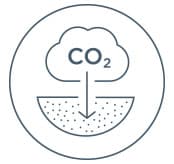
Carbon Capture & Storage (CCS)
Asset lifetime in the steel sector exceeds 40 years, and many upstream ironmaking facilities in India, China, or other regions are still very young. Here, carbon capture and storage (CCS) comes into play. CCS relies on state-of the-art processes like Mitsubishi Heavy Industry’s KM CDR amine scrubber-based capturing system. After capture, the concentrated and pure CO2 can be compressed and safely stored underground. Alternatively, it can enhance oil recovery or produce base chemical products. For example, LanzaTech’s proprietary microbial fermentation process ferments CO2, CO, and hydrogen into ethanol—i.e., eFuels—or other base chemicals.
Expanding Carbon Capture
While avoiding carbon-intensive processes using new technologies shows excellent promise in several production areas, there will be many hurdles to overcome in the short-, mid-, and long-term for the steel industry regarding carbon emissions. As part of the Mitsubishi Heavy Industries Group (MHI), Primetals Technologies is fortunate enough to access technologies and processes, such as the Kansai Mitsubishi Carbon Dioxide Recovery Process (KM CDR), for carbon capture and storage. Combining the expertise in the metals industry at Primetals Technologies with the unique KM CDR process—already installed at power plants worldwide—may open new doors for off-gas treatment in the steel industry. Together with ArcelorMittal and BHP, Primetals Technologies will investigate the suitability of the process for the steel sector. A pilot plant will be installed to test and optimize the process for the blast furnace top-gas, the waste-gas from reheating furnace, and the flue-gas from direct reduction.
The term “Emissions Trading System” (ETS) has become relatively broad and refers to various mechanisms to accelerate and incentivize the adoption of low-carbon technologies. Firstly, an ETS is not the same as a carbon tax, which places a direct tax on emissions. An ETS uses a fluctuating carbon price, like market-based trading. The E.U.’s ETS uses a “cap-and-trade” system, meaning a “cap” is set on specific emissions by groups who can purchase and trade emissions allowances. By lowering the cap each year, emitters are forced to trade allowances, which fluctuate based on the market, or invest in technologies to reduce their overall carbon emissions. Introducing policies such as the Carbon Border Adjustment Mechanism (CBAM) in Europe also adds another element of carbon pricing on imported and exported carbon emissions.
Steps Toward Decarbonization
Companies striving to become industry leaders in green steel production can transform by focusing on “two-step” and “hybrid” steelmaking, combining direct reduction and Smelter technologies or electric steelmaking, or deploying CCS with their current integrated production routes to take the first steps toward decarbonization. The global emphasis on climate change is not only a challenge for the heavy industry but also an opportunity to define a sustainable future for generations. The shape of the future will be determined by strong, sustainable, and recyclable green steel.
VDMA TECHTALK
BREAKTHROUGH SOLUTIONS FOR GREEN STEEL
While there are major considerations on the path to green steel, the recognition of these roadblocks as areas for improvement and innovation is at the heart of the Green Steel task force at Primetals Technologies.
